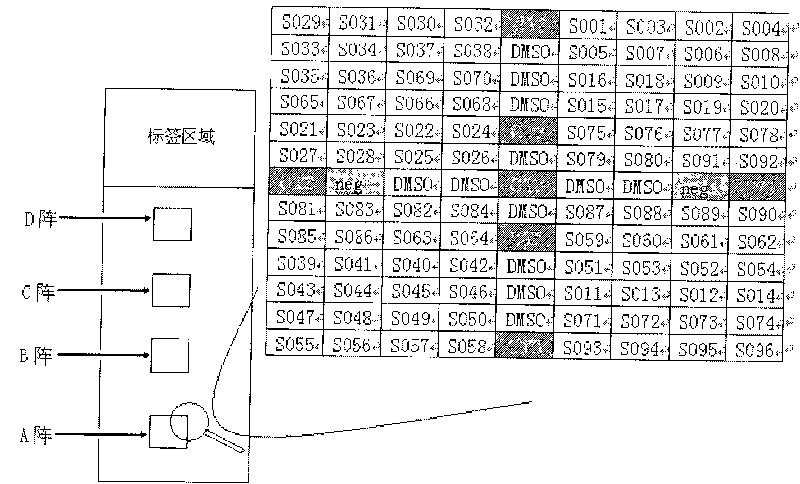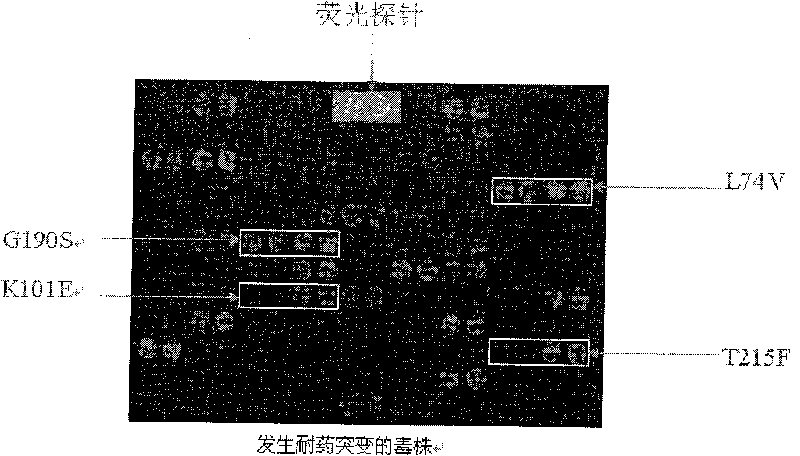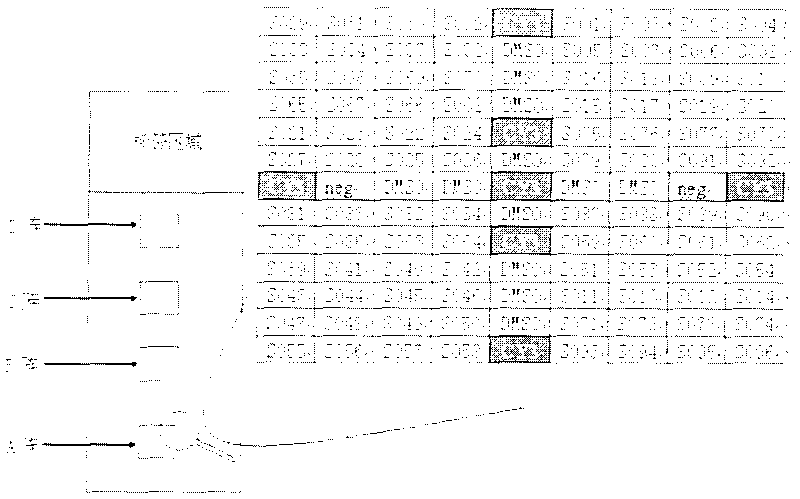Gene chip for inspecting HIV P-reverse transcriptase inhibiting resistance and its reagent kit
A technology of reverse transcriptase inhibition and gene chip, applied in the field of detection, can solve the problems of heavy workload, time-consuming, expensive, etc., and achieve the effect of strong repeatability, easy operation and high accuracy
- Summary
- Abstract
- Description
- Claims
- Application Information
AI Technical Summary
Problems solved by technology
Method used
Image
Examples
Embodiment 1
[0037] Embodiment one Preparation of oligonucleotide probes
[0038] 1. Probe design: Based on 163 strains (3 of which are HXB2, U71182 and AY531116, which are representative strains of HIV in China; the other 160 sequences were provided by the National AIDS Center of the Chinese Center for Disease Control and Prevention, which were isolated in China in 2004. The comparison result of the bioinformatics of the HIV drug-resistant strain) HIV RT gene, utilize Primer Premier 5.0 bioinformatics software to design and screen out 96 probes (as shown in Table 1) for 14 sites, screen It is mainly based on the following two points: one is to place the detection site at the center of the probe, and the other is to keep the Tm values of all probes consistent.
[0039] Oligonucleotide probes screened out in table 1
[0040]
[0041]
[0042]
[0043] 2. Probe synthesis: Synthesize the probe sequence designed in Table 1 and modify the 5' terminal amino group and poly(T).
Embodiment 2
[0044] Embodiment two Preparation of primer sequences for amplifying HIV RT gene
[0045] Using Premier 5.0 bioinformatics software, the PCR amplification primers shown in Table 2 were designed and synthesized using HXB2 as a template.
[0046] Table 2 is used for the primer sequence of amplification HIV RT gene
[0047] SEQ ID
[0048] SEQ ID
Embodiment 3
[0049] Embodiment three Preparation of gene chip
[0050] The probes were placed on the biochip spotter (Spotarray 72) figure 1 The arrangement shown (A, B, C, and D four array probes are arranged in the same way) was spotted on the aldehyde-formed glass slide with a specification of 25mm×75mm×1mm (width×length×height). Thus making a gene chip.
PUM
 Login to View More
Login to View More Abstract
Description
Claims
Application Information
 Login to View More
Login to View More - R&D
- Intellectual Property
- Life Sciences
- Materials
- Tech Scout
- Unparalleled Data Quality
- Higher Quality Content
- 60% Fewer Hallucinations
Browse by: Latest US Patents, China's latest patents, Technical Efficacy Thesaurus, Application Domain, Technology Topic, Popular Technical Reports.
© 2025 PatSnap. All rights reserved.Legal|Privacy policy|Modern Slavery Act Transparency Statement|Sitemap|About US| Contact US: help@patsnap.com



